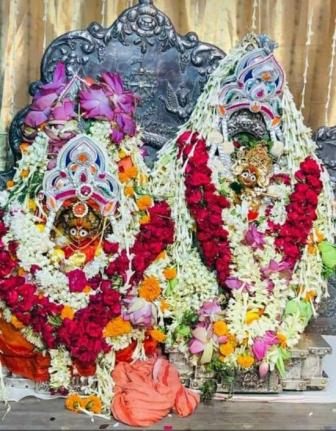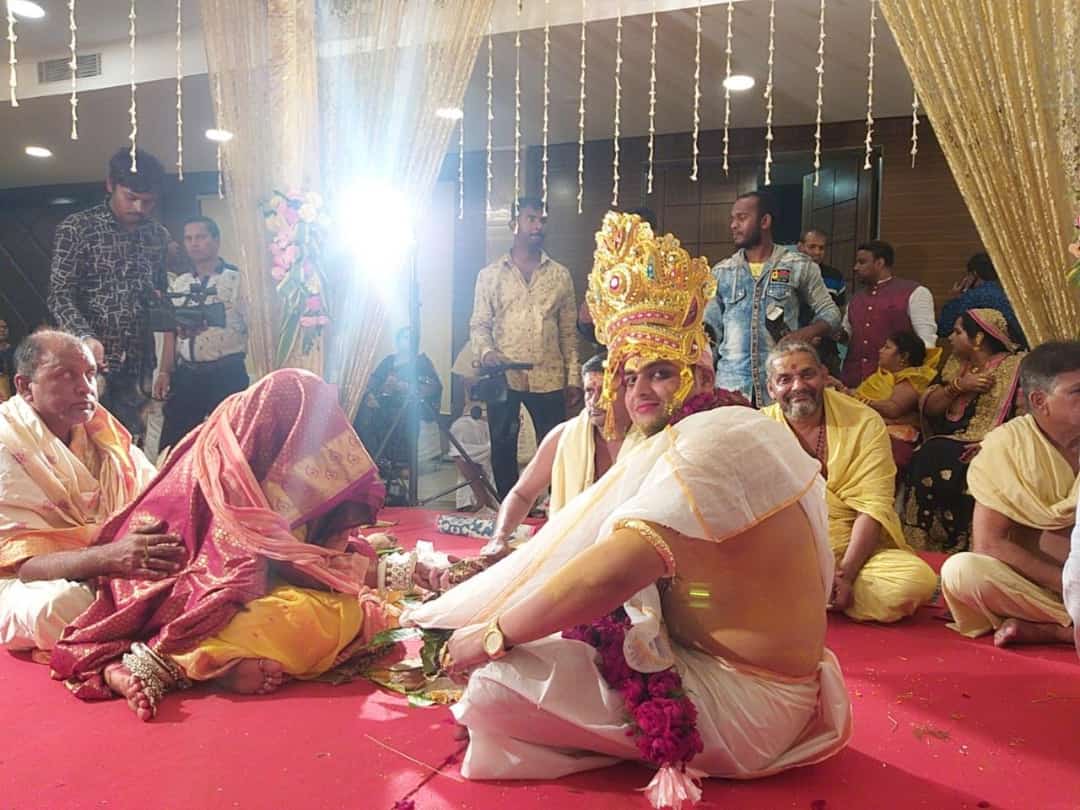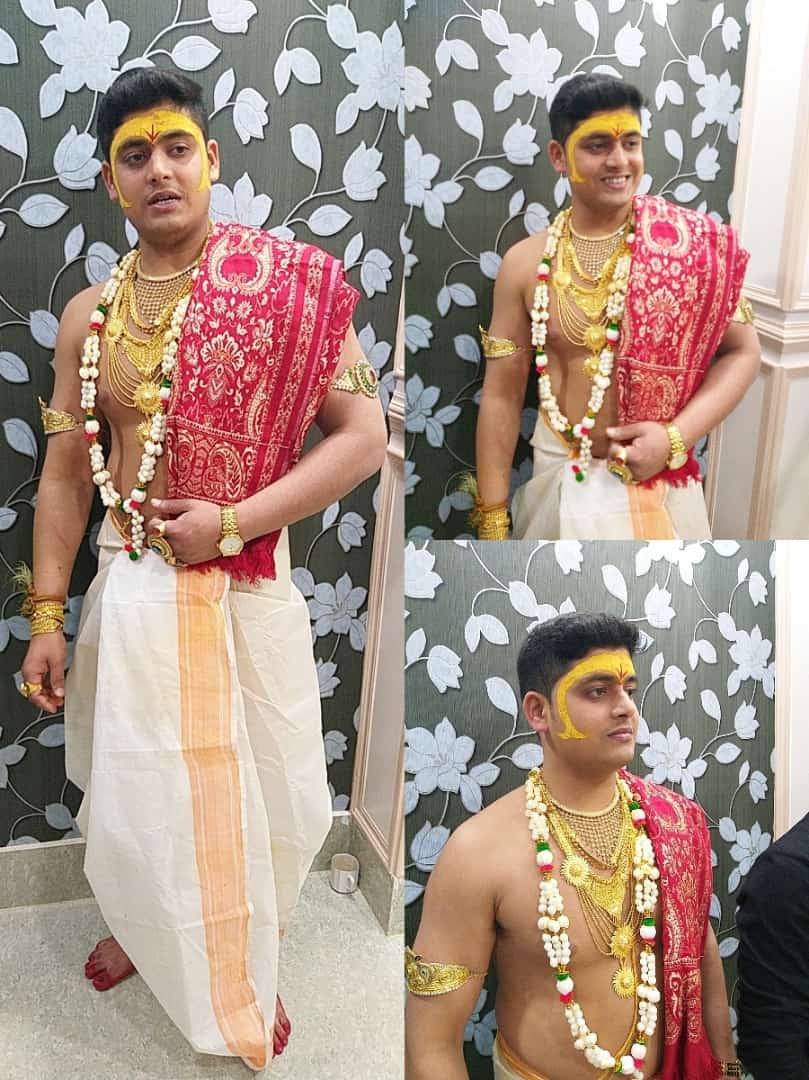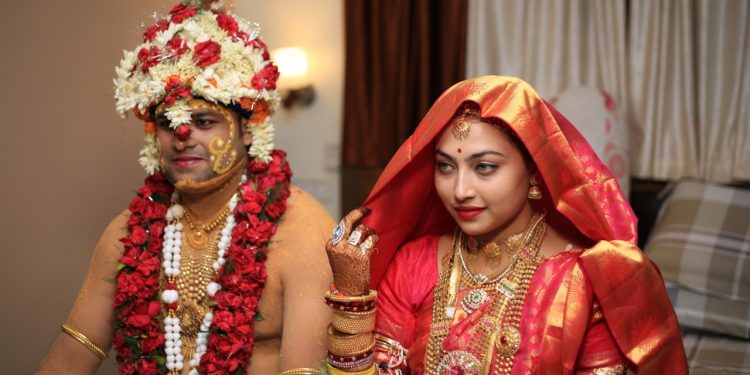In Odia culture, we see the tradition of a groom returning to his place with his bride after marriage. However, there is an exception when it comes to the marriage tradition of Puri Jagannath temple servitors. Servitors take their brides to home on the fourth day of the marriage. Though it may sound strange for us commoners, they have been following such rituals for time immemorial. Their marriages are conducted as per the rituals of Rukmani Vivah. Sunday Post gets candid with a few Brahmin servitors to know more about their marriage traditions.
Records of the 13th century AD and the British period suggest that there were 36 categories of sevayats. In the last two centuries the number of categories has been increased from 36 to 250. Though there are several categories of servitors in Puri Jagannath temple, Brahmin servitors, in particular, are not allowed to have marital relationship with other category of servitors and other non-servitor’s caste. A Brahmin servitor is debarred from performing his service in the temple, if he marries a woman of another servitor’s family or non-servitor caste. The Brahmin servitors keep marital relationship with Brahmin sevayats of the temple. Even they are not allowed to marry the Sevayats of any other temple. They strictly follow the marriage rituals of Rukmani and Sri Jagannath.
Going by the Skanda Purana, Lord Vishnu comes down to earth in a human form as Sri Jagannatha during Kali Yuga. Displaying divine traits, the Lord depicts that there is no distinction between the social and the spiritual life and the social life is nothing other than a manifestation of divinity. Rukmani is believed as an incarnation of Goddess Laxmi who was the only daughter of the king of Vidharba.
Rituals of Rukmani Vivaha
Singhari Harekrushna Kar (28) is one of the Brahmin servitors who got married following the same ritual, shares the process of Rukmani Vivah and also how marriage is held in their community.
Sharing the details about Rukmani Vivah, he says, “Rukmini Vivaha is observed during the Shukla Paksha of Jyeshta month. On this day, Sri Jagannath gets adorned with Baula Pata and sends his dynamic representative, Madanmohan, to kidnap Rukmini. Madanmohan abducts Rukmini and whisks her away from Bimala temple while she is offering her prayer. Shishupala, who is supposed to get married, chases the duo. As a result, a war between Sri Jagannath and Shishupala ensues and the former conquers at last and preparations start for grand wedding.”

Rukmani Vivah continues for four days. Three servitors played a pivotal role in solemnizing their marriage. From Jagannath’s side, Pati Mohapatra performs the rituals while servitor Bittarachhu Mohapatra performs marriage rituals from Rukmani’s side. Pujapanda servitors perform the role of purohits and do the marriage rituals. The entire marriage is held in the presence of servitor Mudirasta, representative of Gajapati Maharaja on the first day. After they get married, Gajapati Maharaja invites the newly-wed couple Madanamohan and Rukmani on the second day. The newly-married couple visits Maharaja’s house in a procession. This ritual is called Guali which is held on Champaka Dwadasi. Again the procession leads to Jambeswar temple at Puri and get welcomed by the five idols of the temple representing five Pandavas. After their visits to Srinara and Jambeswar temple, the couple goes back to Sri Mandir. They give darshan to devotees from Vivah Mandap on third day. On fourth day, chaturthi puja is held to mark end of their marriage. Mahajana servitors do all the arrangement starting from adorning Lord Jagannath and Rukmani to bringing all materials required for the marriage.
Rituals of Brahmin servitors
Another servitor Raj Narayan Khuntia, also, shares how servitors marry in the same way. After engagement and card distribution rituals at the Srimandir, preparation for the D-day starts. He says, “On first day, bridegrooms visit the house of brides in a procession and perform the rituals which continue for an hour. Both prathama barana and dwitiya barana is held on the first day of the marriage. After marriage rituals are over, the groom returns his house without the bride.

On the second day, Uchha, another important ritual, is held for which groom visits to bride’s house with some relatives during night and consumes Mahaprasad there before returning to his place without the bride. On third day, Guali ritual is performed in which he goes to the bride’s house before sunrise without brushing and taking bath. After a yanja is done at his in-laws’ house by 5am, the groom comes back but the bride does not accompany him. He does not return to his house at that time.

The groom has to reside at his relatives’ house but his in-laws’ bear all the expenses held during his stay. In the evening both of the bride and groom get ready to visit their respective maternal house in a procession seeking their blessing for a good conjugal life ahead. After their visit, both of them visit the groom’s house for some ritual following which the bride returns to her place while the groom stays at his home. On fourth day, before sunrise, groom’s family members especially women go to the bride’s house to bring her to groom’s home. Lastly, they follow chaturthi karma to mark the end of their marriage ceremony.”
PNN






































